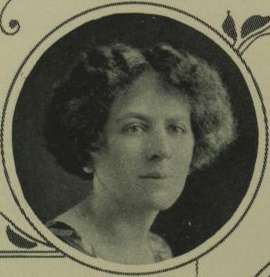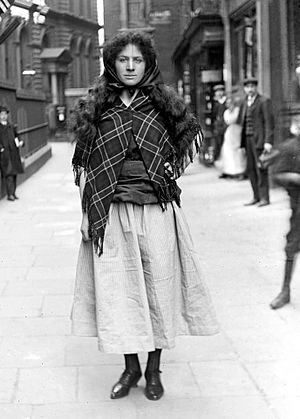Barbara Ayrton-Gould facts for kids
Quick facts for kids
Barbara Ayrton-Gould
|
|
|---|---|

Ayrton-Gould in 1924
|
|
| Member of Parliament for Hendon North |
|
| In office 5 July 1945 – 22 February 1950 |
|
| Preceded by | Constituency established |
| Succeeded by | Ian Orr-Ewing |
| Personal details | |
| Born |
Barbara Bodichon Ayrton
3 April 1886 Kensington, London |
| Died | 14 October 1950 (aged 64) |
| Nationality | British |
| Political party | Labour |
| Spouse | Gerald Gould |
| Relations |
|
| Alma mater | University College, London |
| Nickname | Barbie |
Barbara Bodichon Ayrton-Gould (born Ayrton; 3 April 1886 – 14 October 1950) was an important British politician. She was a member of the Labour Party. She also worked hard for women's right to vote, making her a suffragist. Barbara Ayrton-Gould served as a Member of Parliament (MP) for Hendon North. She held this position from 1945 to 1950.
Contents
Early Life and Family
Barbara Ayrton-Gould was born in Kensington, London. Her parents were Hertha Marks Ayrton and William Edward Ayrton. Both were famous electrical engineers and inventors. Barbara went to Notting Hill High School. She later studied chemistry and physics at University College, London.
She married a writer named Gerald Gould. Their son, Michael Ayrton, became a well-known artist. Before 1930, Barbara worked as a publicity manager. She worked for a newspaper called the Daily Herald.
Fighting for Women's Right to Vote
In 1906, Barbara joined the Women's Social and Political Union (WSPU). This group worked for women's voting rights. By 1909, she stopped her science research. She became a full-time organizer for the WSPU. She wrote a pamphlet called The Democratic Plea. This pamphlet supported women's right to vote. It was for the Men's Political Union for Women's Enfranchisement.
In March 1912, Barbara took part in a protest. This protest involved breaking store windows in the West End of London. She did this to draw attention to the suffrage cause. For this, she spent time in prison. After she was released in 1913, she went to France. She dressed as a schoolgirl to avoid being arrested again.
In 1914, Barbara left the WSPU. She was unhappy with how the leaders made decisions. She also felt that Christabel Pankhurst, a leader, was often absent. On 6 February 1914, Barbara, her husband, and Evelyn Sharp started a new group. They called it the United Suffragists. This group was special because it allowed both men and women to join. The United Suffragists stopped their work in 1918. This was when the Representation of the People Act was passed. This law gave some women the right to vote in the United Kingdom.
Becoming a Member of Parliament
Barbara Ayrton-Gould joined the National Executive Committee of the Labour Party in 1929. This committee helps run the Labour Party. She became the vice-Chair in 1938. From 1939 to 1940, she was the Chair of the Labour Party.
Before becoming an MP, she tried four times to be elected. In the general election of 1929, she almost won. She lost by only four votes in Northwich.
Her fifth attempt was successful. In the Labour Party's big victory of 1945, she was elected. She became the Member of Parliament for the new Hendon North constituency. The area of Hendon had grown a lot. It was then split into two parts. Before this, the area had always voted for Conservative candidates since 1910. But Barbara's campaign won the north division. This was a big achievement. No other Labour candidate won there again until 1997.
In Parliament, Barbara focused on two main issues. These were food supplies and child poverty. She successfully introduced a resolution. This called for a government investigation into child neglect. She also served as a Justice of the Peace in Marylebone. This meant she helped with local legal matters.
Barbara Ayrton-Gould held her seat until the next general election in 1950. She lost to Ian Orr-Ewing from the Conservative Party. In September, she decided not to run again because of poor health. She passed away a month later. This was eight months after she left the House of Commons.
See also
 In Spanish: Barbara Ayrton-Gould para niños
In Spanish: Barbara Ayrton-Gould para niños


